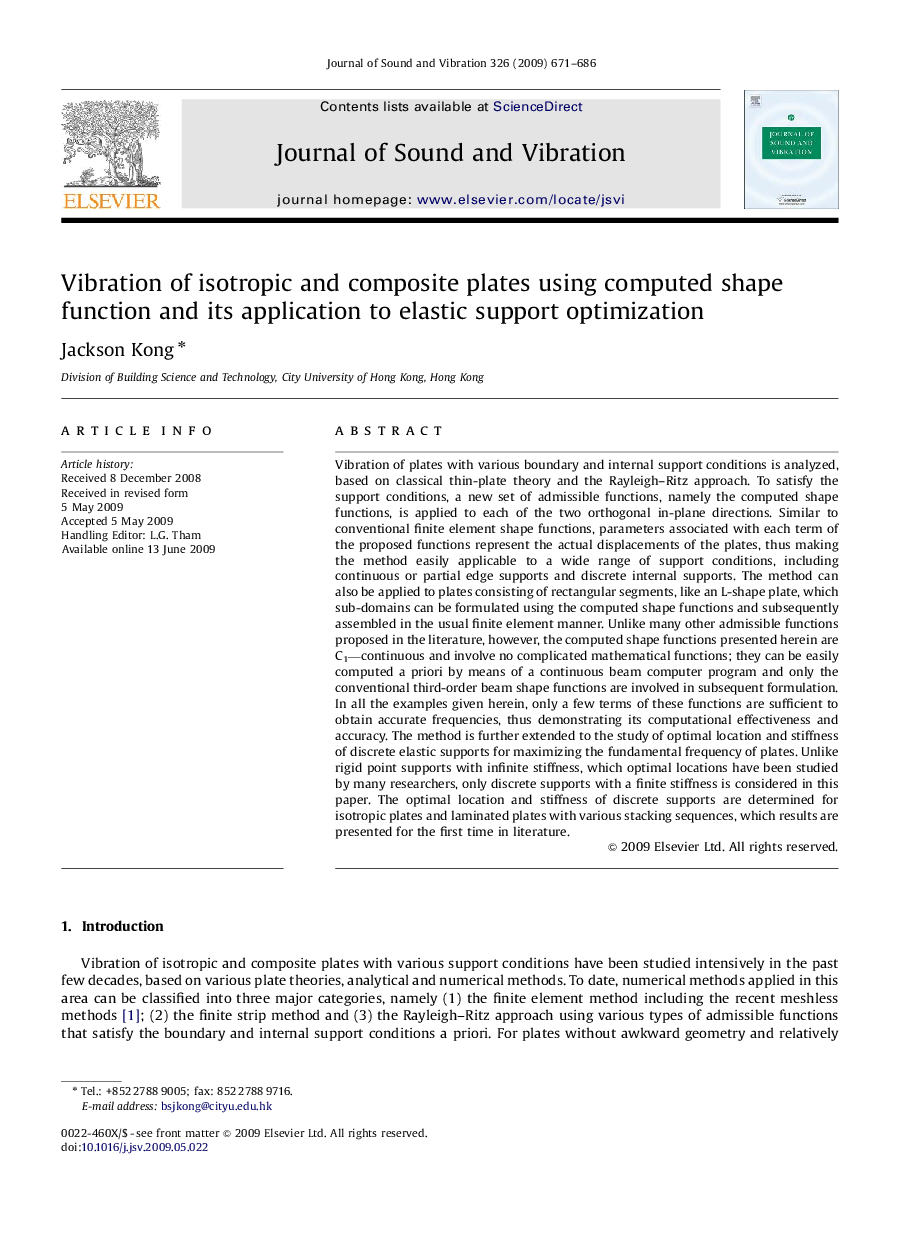| Article ID | Journal | Published Year | Pages | File Type |
|---|---|---|---|---|
| 288985 | Journal of Sound and Vibration | 2009 | 16 Pages |
Vibration of plates with various boundary and internal support conditions is analyzed, based on classical thin-plate theory and the Rayleigh–Ritz approach. To satisfy the support conditions, a new set of admissible functions, namely the computed shape functions, is applied to each of the two orthogonal in-plane directions. Similar to conventional finite element shape functions, parameters associated with each term of the proposed functions represent the actual displacements of the plates, thus making the method easily applicable to a wide range of support conditions, including continuous or partial edge supports and discrete internal supports. The method can also be applied to plates consisting of rectangular segments, like an L-shape plate, which sub-domains can be formulated using the computed shape functions and subsequently assembled in the usual finite element manner. Unlike many other admissible functions proposed in the literature, however, the computed shape functions presented herein are C1—continuous and involve no complicated mathematical functions; they can be easily computed a priori by means of a continuous beam computer program and only the conventional third-order beam shape functions are involved in subsequent formulation. In all the examples given herein, only a few terms of these functions are sufficient to obtain accurate frequencies, thus demonstrating its computational effectiveness and accuracy. The method is further extended to the study of optimal location and stiffness of discrete elastic supports for maximizing the fundamental frequency of plates. Unlike rigid point supports with infinite stiffness, which optimal locations have been studied by many researchers, only discrete supports with a finite stiffness is considered in this paper. The optimal location and stiffness of discrete supports are determined for isotropic plates and laminated plates with various stacking sequences, which results are presented for the first time in literature.
